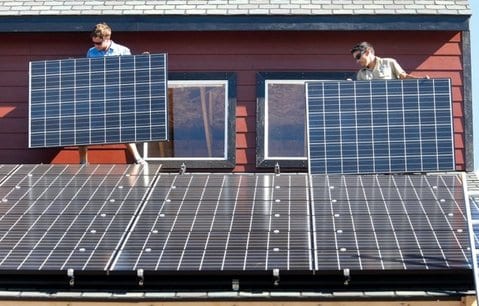Less than a week after the Victorian Andrews government promised to fight network discrimination against rooftop solar households, the state’s Essential Services Commission has confirmed it will slash the feed-in tariff for solar power exported to the grid to 5c/kWh.
The ESC said in a statement on Monday that it has decided to set the minimum rate for purchases of small renewable energy generation electricity at 5 cents per kilowatt hour, starting January 2016.

It said that it had come to this price by weighing up the marginal cost of the equivalent amount of electricity that would otherwise need to be purchased from central generators, as well as “the locational value of electricity produced close to the final consumers compared to relatively distant central generators.”
The ESC said the energy value of PV electricity had been calculated as a weighted average of the forecast spot market prices for Victoria for each half-hour period of 2016, as prepared by ACIL Allen Consulting.
Ironically, the Commission also said part of its decision to go with the lower 5 cent rate, down from the previous 6.2c/kWh rate, was due to a lower forecast wholesale market price of electricity, particularly during daylight hours when PV electricity was being generated.
The commission said it did not take into account any environment or network benefits of rooftop solar, because of a “lack of evidence”. The decision was panned by the solar industry, who say the fair value of solar should be at least twice as much, if not equivalent to the full retail rate.
“This decision delivers a transfer of wealth from solar PV owners to electricity retailers,” said Australian Solar Council chief John Grimes.
“Solar energy exported to the grid is sold to your neighbors at the full retail rate, often upwards of $0.25 per kilowatt-hour. So paying a solar owner $0.05 cents per kilowatt hour for that exported energy is simply unfair.”
Solar Citizens national director Claire O’Rourke said the ESC had got its decision wrong, and was sending a starkly different message to Victorians that the state government, which just last week announced a Renewable Energy Roadmap aimed at achieving a renewable energy target of no less than 20 per cent by 2020 and with the stated goal of promoting rooftop solar uptake, and protecting the rights of existing rooftop solar households.
“The slashing of the feed-in tariff by the ESC is extremely unfair and risks undermining increased renewable energy as part of Victoria’s energy mix,” O’Rourke said in a statement on Tuesday.
“The Victorian government has committed to a review determining what a fair price should be later this year, but this could be too little too late if the ESC feed-in tariff cuts get the green light.
“It’s not proper process to cut the feed-in tariff now, before we know what a fair price for solar fed back into the grid should be.
“Energy Minister (Lily) D’Ambrosio should delay these changes until the results of the upcoming State Government review are available.
“It punishes tens of thousands of households that are likely to lose a large chunk of the already small financial return they receive from providing clean, renewable energy back into the grid.
“This cut will also make it more difficult for the thousands more families in Victoria who want to make the move to solar and enjoy the cost savings on electricity that rooftop solar can bring.”
This article was originally published on RE sister site, One Step Off The Grid. To sign up for the weekly newsletter, click here.










